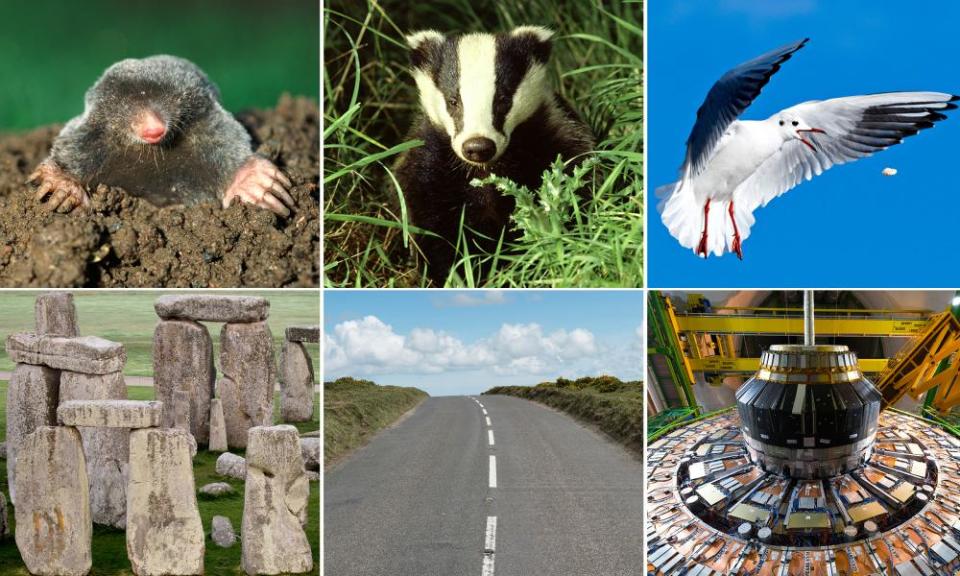Are Devon’s road-wrecking badgers a match for the German cows who blew up a barn?

We are destroying their homes and their kin so it was, perhaps, only a matter of time before the animals started fighting back. Until evolution gives them opposable thumbs, they have to use whatever nature has equipped them with. In the case of badgers, this means digging. Perhaps sickened by the numbers killed on Britain’s roads (an estimated 50,000 badgers are hit by vehicles every year), badgers have tunnelled under a road in Braunton, north Devon, causing it to collapse. It has been closed by the council “for the safety of the travelling public”. It is far from the first incidence of animals attacking the human world. Here are some others:
Attacking ancient monuments
Stonehenge has stood for more than 5,000 years, but scientists have warned there could be an attack on it by moles. The tunnelling mammals are predicted to take advantage of climate change. “Warmer winters are likely to bring higher populations of burrowing mammals, including badgers, moles and rabbits, which may destabilise stonework and disturb buried archaeological deposits,” said a United Nations report.
Electricity blackouts
A 72-hour blackout in Albania’s capital, Tirana, was caused by a cat chasing a mouse. The pair were reported to have run among some high-voltage cables and were both sadly electrocuted. A luckier attempt was made by a monkey in Kenya last year. It survived a fall on to a transformer at a power station, which resulted in a nationwide blackout lasting nearly four hours.
Explosions
A herd of 90 German dairy cows used their natural methane emissions to create an explosion in their barn, which damaged the roof. One cow was reported by Associated Press to have suffered “light burns”.
Sabotaging transportation systems
That distinct aroma wafting from a McDonald’s is simultaneously tempting and stomach-turning. At Manchester Victoria station last year, seagulls were mainlining the scent through a vent near the roof and pecking at the plastic roof panels, weakening the structure. It broke in October.
Impeding scientific progress
What do the animals know that we don’t? It feels as if they are becoming more desperate to stop us continuing with the experiments to recreate the conditions of the Big Bang at the Large Hadron Collider in Switzerland. In 2009, a bird – and a baguette it was eating – got into some machinery causing rising temperatures in one of the collider’s cooling plants. Then last year, a beech marten – a weasel-like creature – caused the LHC to be shut down for several days. The power cut was reportedly caused by chewed-through cables, but a Cern spokesman described it, more enigmatically, as “the passage of a weasel on a high-voltage electrical transformer”.
Setting fire to buildings
In 2014, a pigeon was blamed for starting a fire at a building in south London – it is thought it carried a lit cigarette to its nest. “The smoking gun was found when we discovered a partially burnt birds nest,” said a spokesman. Rats were blamed for causing a fire at a bank in London’s Chinatown area the year before. A spokesman for London Fire Brigade said investigators had found rat droppings and “several sections of wood and cables having visible bite marks and evidence of gnawing”. They didn’t say whether the rats had made off with any loot.

 Yahoo News
Yahoo News 